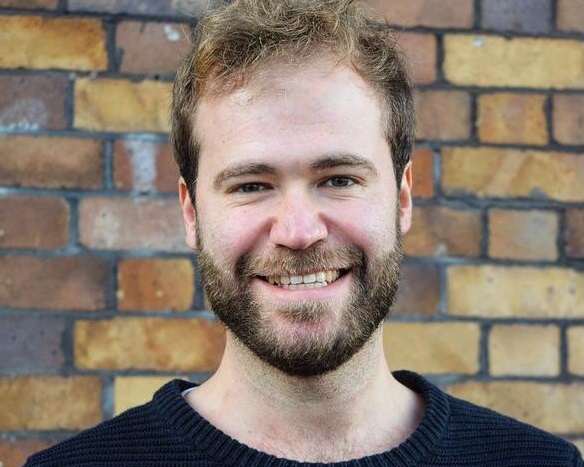Speaking to an audience at The Business Show 2022 at London’s ExCel Centre, Kaur dished out some practical business insights.
“I’ve been classed in recent months as an overnight success, but I won’t accept that because this business has taken me years of mistakes, costs, highlights, lowlights and so many different obstacles that I’ve had to overcome,” she opens.
Here are six core lessons from The Apprentice winner’s seminar.
Be flexible and don’t look too far into the future
“Why are you running your business?” Kaur quizzes the audience. “I’m going to unashamedly say that there is absolutely no harm in you setting up a business and running it because you want profit, because you want to be financially free and because you want to be successful. There can be a lot of pressure on finding your ‘why’ and this innate passion.”
Having it in writing is crucial, though. “You need to put pen to paper. There are so many of us that never actually get around to it. Write down your goals. My twist is ‘Don’t think too deep into the long future’.” She talks about the pressure to think what the goal is in two years’ time or three years’ time. “A couple of years ago, we had no idea there would be a global pandemic. I think about the next six months, because I don’t know how the world is going to change in future.”
Don’t be afraid if those goals change, Kaur advises, saying that her goals change all the time. Another door will be opened and she doesn’t want to go in the same direction anymore: “Another thing that can often get in the way of you achieving success with your business is being fixated on this big fancy goal that you thought of two years ago, so maybe it’s time to reassess.”
Nail your branding
“This might not be a tip that’s suitable for everybody,” she continues. But has helped her enormously since winning The Apprentice. “I sell waffles, crepes, ice cream. I did not invent cake, there was definitely cake on the scene before I was there,” she says in a self-deprecating manner. “In my head, I just thought, ‘Great, let me pop up a logo and have a few cool colours and let me get trading Nothing wrong with that whatsoever.’” Often that’s what you need to do to get the ball rolling. But, as she says, we’re talking about scaling up and growing your business.
“I’ve actually rebranded twice,” Kaur says. She rebranded Oh So Yum in line with The Apprentice because you have to rebrand as part of the show. “I’m so glad I did. I didn’t want to because guess what? Rebranding costs money and we all know that we want to save as many costs as we possibly can.”
Be warned about falling into the trap of believing that brand is all about logo. “If you are looking to promote your business, you need a lot more than a logo because you need to be able to stand up and be proud of what you do, and have an overriding theme that can then transfer into the physical and digital world.”
For Kaur, it was thinking about what feeling the products she sells evoke. “A few years ago, I would have said I own a dessert parlour. I make waffles, crepes and ice cream – and that’s it,” she says. Now, because she’s invested in her brands and figured out what Oh So Yum’s message is, the company had improved. “We deliver a taste of happiness, because everybody deserves that. How much better does that sound? That way, if you are reaching out for investment or expanding over different platforms, then you have a language, you have a tone and that can then be transferred across these other channels.”
“I’m probably the worst at branding. I don’t enjoy it,” she admits. If you’re struggling, and you’re not sure how to grow that logo or grow your identity, Kaur lays out a couple of options.
“I used a branding agency and they were amazing. They can help you with packaging, marketing, absolutely everything. But it’s really expensive, or it can be. What you want to do is if you do go for a branding agency, or anyone that you work with, you want to make sure that they understand why and that you’ve got the same goals out of the project, especially if the person you’re working with hasn’t worked with your industry style before.
Alternatively, if you don’t want to go down a branding agency route, or you haven’t got quite got the budget, Fiverr, Upwork and 99 designs are good options. The key is not to ask for a logo. “If you want to change your logo, go for a brand package and have that conversation, have a very detailed brief. “The more time you invest in making it clear for that person, the better the result you’re going to get,” The Apprentice winner says.
>See also: The lessons your business can learn from the world’s best logos
Go digital, but don’t go crazy
Kaur shows a slide with platforms including Instagram, Facebook, LinkedIn, Shopify, Amazon, Snapchat, WhatsApp Business… “I can’t count them on all of my fingers, how many platforms there are to be able to sell your product or service online. However, I would implore you to think about what strategy and on which platforms you want to be on.”
She’s really had to work on the right offering for Oh So Yum. “Naturally, we’re salespeople at the end of the day. We want to cash in on those sales, so let’s be on every single platform going. I wouldn’t recommend that.”
Instead, select a few that you feel comfortable with and that you know that your target market or demographic use on a regular basis and get comfortable with that. Look at the tools and resources that they’ve got that can help you market your products and capitalise on the sales on those channels first, then you can think about hitting the other platforms. “Otherwise, trust me, you’re going to be at your laptop, doing admin day in, day out, uploading products onto all these crazy platforms. You’d then have to get someone to help you and pay them extra on top. It just turns into a mess.”
These platforms take a commission as well, so you have to be comfortable with your finances. Kaur says that you should be asking yourself whether you can afford to be on these platforms and if these selling methods are a viable strategy.
Automate your systems
As every entrepreneur knows, when you first set up a business, you pretty much have to do everything by yourself and that no one else can quite do it the same way. “It feels like you’ve asked someone to do something, but they just can’t do it the same way that you did,” she says. “It’s really difficult to let go as a business owner.” You do have to accept it, if you’re delegating some sort of a task to someone: “We’re talking about scaling your business here, not just nurturing the one that you’ve got – we want to grow, right?”
Kaur says that you have to accept that you are going to have to take a step back from some of the tasks and responsibilities, even if you really enjoy doing them. “You need to offload it because it’s not actually growing the business. Your time and talent should be focused on growing the business, not doing the daily to-do tasks. Someone else or something else can do that for you.”
Have the right mindset
This is a mainstay of entrepreneur advice articles and Kaur acknowledges this.
Everything is to do with mindset for the Oh So Yum founder, crediting the hard work she’s done on herself over the past two years for her accelerated business growth. “For me, anything is possible. There is no ‘Can’t do’,” she says. “If you think you can’t do it, guess what? You’re completely right. It’s all about self-confidence. Internally work on yourself, believe you can do it with every bone in your body, be really positive about it.” What you do need is that respect for what you’re trying to achieve, your goal while harnessing all the tools, resources, team and support network that can get you to that goal.
“Every single person has their own personal journey and experiences that have led them to this point and that is completely unique. Your insecurities, strengths and weaknesses are completely unique to you,” she says. “You’re nervous about something or you’re not experienced in something? Whatever it is – let’s say you don’t take the risk because you’re too insecure and you don’t feel confident or feel qualified – then don’t do it. It’s your choice. But you’re the one that’s losing out on that benefit, that experience and the opportunity to learn and grow.” She prefers the approach of trying to learn from someone who has more expertise in a certain area than she does: “Always flip the insecurity, turn it into a positive.”
In the past, Kaur has tried to set up a handbag company and a nail business. “I don’t have any beauty qualifications whatsoever – that was really silly,” she laughs. She qualifies those as two failed businesses. The good news, as she says, is that that’s the definition of being an entrepreneur. “That’s what we do. You give things a go and you’re not afraid to move on. Sometimes the biggest strength is having the ability to let go, as opposed to clinging on to something.”
Taking or leaving feedback
On being asked by an audience member whether or not they should be taking on feedback, Kaur gives a knowing nod. Negative feedback can be really hard when you are running your business or breaking your back working crazy hours and you’re doing everything that you possibly can, she says. So the minute that someone criticises that, or picks a hole and says, ‘Why are you doing that?’ you can get really defensive and almost upset to a point, because you think, ‘Hey, hang on, I know what to do with my business, thank you. I know how to run my business. I’ve not asked for your opinion or your advice.’
“Actually, that feedback is a massive gift,” she says. “Thank you to the people that do that, because it’s your choice [as the business owner] what you do with constructive criticism. You have to listen in every single situation and then you make a conscious decision what to do and how to process that information.”
She highlights four ways in which you can respond:
1. You’re going to sit on it and you’re going to think, ‘Hang on, they might be right. Maybe they’ve got a point.’ You don’t have to admit it to them. You just say, ‘Cool, thanks.’
2. You think, ‘I 100 per cent agree with them and this is what I should be doing and the direction.’
3. You say, ‘Maybe I don’t quite agree. But you’ve just given me another seed to think about and I’m going to go look into that instead. You’ve done me a favour by pointing something out to me that I didn’t realise before.’
4. You can just completely throw the feedback away, because you don’t want to listen. You’ve digested it. You’ve realised by doing an assessment with the info, not from an emotional perspective, but from a calculation based on your experience and knowledge, that actually, that person isn’t right. Do what you know in your gut.
“A trick that I use is really trying to take the emotion out of my business decisions,” says Kaur. “Oh So Yum is my baby. I have worked so hard, every single element of it: the colours, the grouting in the tiles in the bathroom, the menu prices, reaching out to designers, recruiting the team, creating these processes. Me and my sister have done that. We’ve been on that journey together.
“If you want to scale and grow your business, you have to get out of the emotional side of business,” she advises. “Yes, it is your baby. But you need to see it as almost a detached entity of its own. It’s a company. You have to think, ‘How am I going to best supercharge this, use the tools and resources around me and get the best and squeeze the best out of this separate being?’”
In closing, she summarises: “Use a combination of your gut experience knowledge and definitely listen to others, because they either reinforce what you already know or they do you the favour of pointing you in a different direction.”
Read more
5 top small business tips from one of Britain’s best business schools




